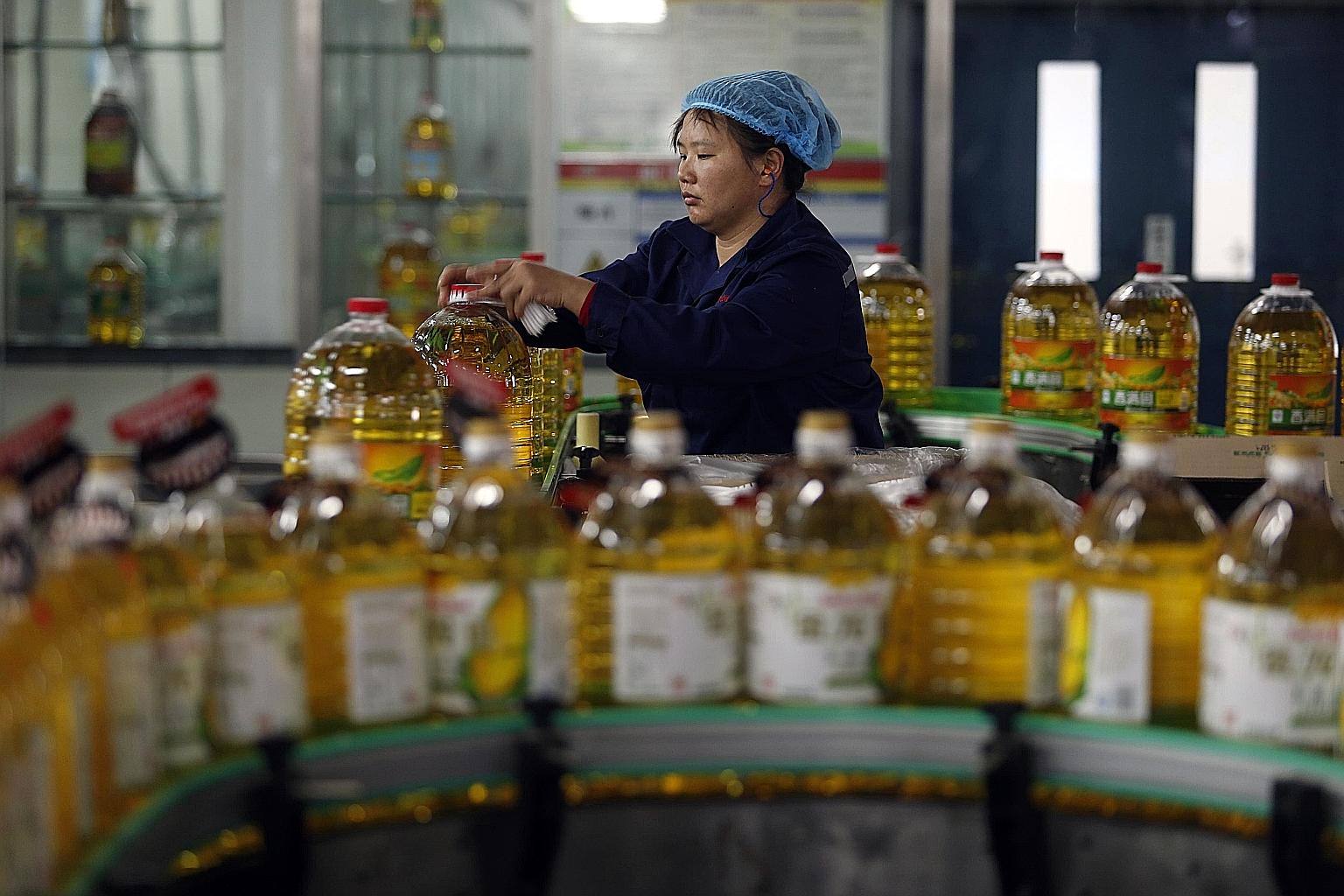The oily truth
Eating palm oil leads to higher levels of 'bad' cholesterol but it may not be the worst cooking oil, say experts
Sign up now: Get ST's newsletters delivered to your inbox

Researchers from NUS have established that the elevated levels of low-density lipoprotein cholesterol from eating palm oil translate into a 6 per cent higher risk of coronary heart disease. The study was published last May in The Journal Of Nutrition by the American Society for Nutrition.
PHOTO: AGENCE FRANCE-PRESSE
Follow topic:
Not all types of cooking oil are equal, and a recent study has singled out the ubiquitous palm oil for raising one's risk of coronary heart disease.
Researchers from the National University of Singapore (NUS) established that eating palm oil led to higher levels of "bad" cholesterol in the body. This was compared with other types of vegetable oil that contain lower levels of saturated fat.
The elevated levels of low-density lipoprotein (LDL) cholesterol from eating palm oil translated into a 6 per cent higher risk of coronary heart disease incidence and death, they concluded.
These findings were drawn from analysing 30 past studies on this topic. The study was published last May in The Journal Of Nutrition by the American Society for Nutrition.

It has long been known that palm oil has plenty of harmful saturated fat - about 50 per cent, much higher than other commonly used cooking oils - which can clog up the arteries.
However, some researchers have cast aspersions on the detrimental effects of palm oil.
In addition, not all clinical trials on humans have shown a link between palm oil consumption and LDL cholesterol levels, said Associate Professor Rob van Dam of the Saw Swee Hock School of Public Health, the principal investigator of the latest study.
These slivers of doubt prompted his team to carry out a comprehensive review of relevant clinical trials.
Establishing a more definitive conclusion is important, given that palm oil is widely used in Asia. It is also a highly popular cooking oil in Singapore, and generally used by food outlets and hawkers.
One reason is that palm oil is the cheapest cooking oil. A two-litre bottle costs $6 to $8 at retail shops.
"Many people use 'blended oil' or 'vegetable oil' for home cooking. These are high in palm oil content," said Prof van Dam.
"Although small amounts of palm oil are unlikely to have a large effect on LDL cholesterol and one's risk of heart disease, many of us are eating large amounts of palm oil on a daily basis," he added.
Coronary heart disease is the No. 3 killer in Singapore, accounting for 16 per cent of deaths in 2014, according to figures from the Ministry of Health.
A poor ratio of saturated to unsaturated fat consumed raises a person's risk of developing such cardiovascular diseases.
The health dangers of cooking oil products that are high in saturated fat are recognised by the Health Promotion Board (HPB), which started offering subsidies to get food joints to use healthier oil.
Under the Healthier Ingredient Scheme, which was launched in January last year, oil suppliers receive subsidies for selling healthier oil products to restaurants, hawkers and food outlets.
The goal is to improve dietary fat through reducing the intake of saturated fat by partially replacing it with cardio-protective unsaturated fat, said an HPB spokesman.
The subsidy is applicable for oils with a saturated fat level of 35 per cent or lower.
In addition, the Healthier Choice Symbol helps consumers identify healthier cooking oil products.
One in two cooking oil products sold in supermarkets is now labelled as healthier, said the HPB spokesman.
"We are encouraged to see a strong growth in demand for healthier cooking oil in the supermarkets."
The HPB does not specify the types or blends of oil that may be endorsed, as long as they meet the board's nutrition criteria, such as the proportion of saturated fat and trans fat.
While palm oil has one of the highest proportions of saturated fat among vegetable oils at 49 per cent, it may not be the worst cooking oil around.
The NUS study's meta-analysis found that palm oil increased high-density lipoprotein or "good" cholesterol levels when pitted against cooking oils that are high in trans fat, said Prof van Dam.
Trans fat is a type of fat formed by an industrial process, called partial hydrogenation, to make liquid vegetable oils more solid. In our bodies, it increases bad cholesterol while decreasing good cholesterol.
"Therefore, the use of palm oil may be preferable to replace trans fat in food items that require one of these fats to maintain their sensory characteristics - for example, the texture of doughnuts or the crispiness of cookies," he said.

